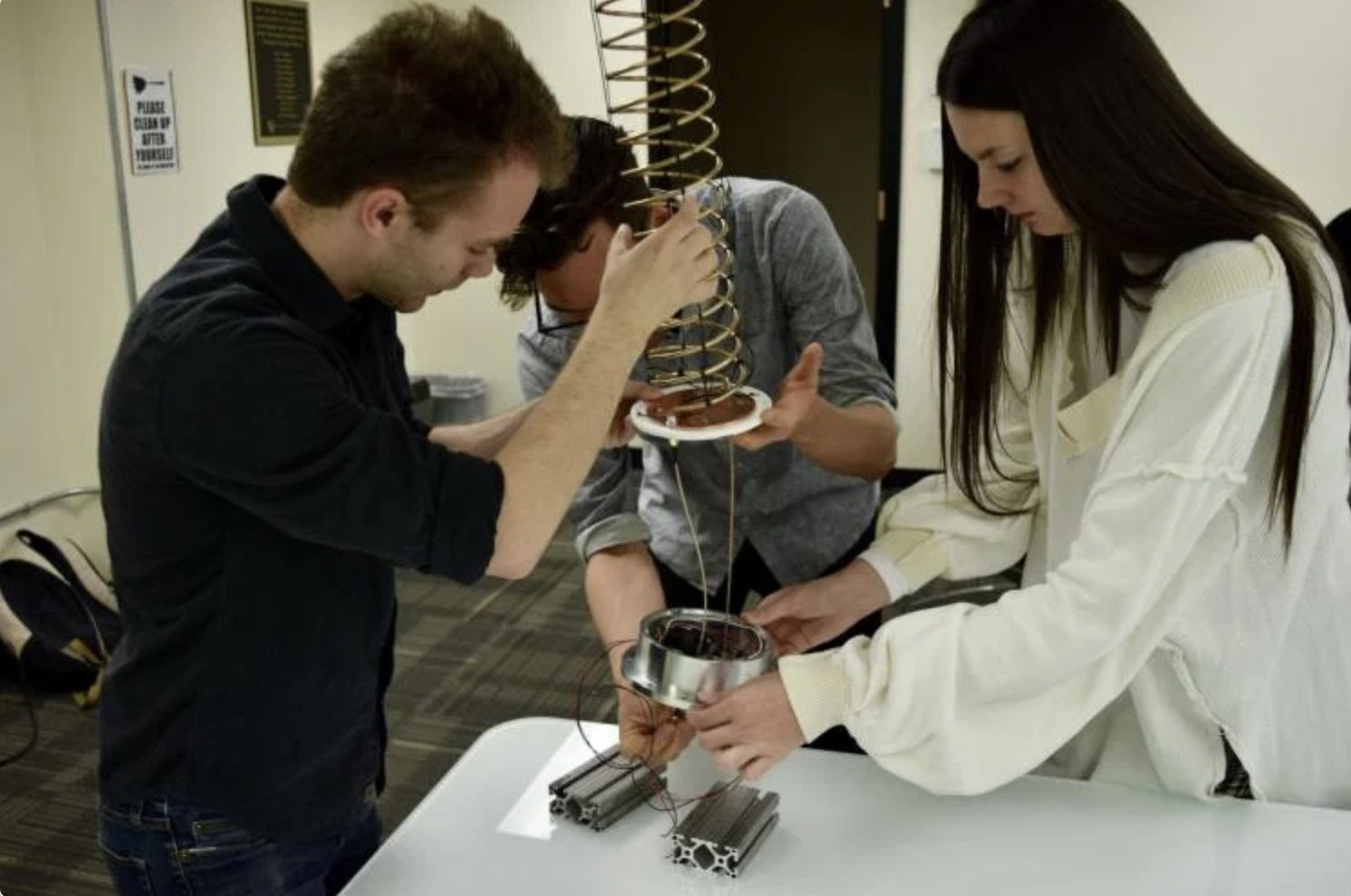
Student researchers from the Paul M. Rady Department of Mechanical Engineering at the University of Colorado Boulder have designed a compactable antenna that would allow for more powerful radio communications on smaller satellites. Their project was sponsored by Lockheed Martin Space.
Unlike current satellite antenna hardware that are fully deployed upon launch, the student’s prototype is a deployable helical antenna that starts in a compressed state. Once in space it is activated by an on-board computer to extend to four times its compressed height – from 3.5 inches (~9 cm) to nearly 20 inches (~51 cm) – for full functionality. This is possible due to the unique design of the antenna, which is similar to a mechanical spring.
“The antenna geometry resulted in a powerful spring,” said Nicolas Garzione, one of the electromechanical engineers on the team. “Part of our requirements is that it has to survive the equivalent of an Atlas V launch, which is pretty violent. We spent a lot of time on that restraint mechanism, which is a key part of our project for viability and safety.”
Another project requirement from Lockheed Martin Space was that the prototype needed to be scalable, as the size of the device dictates the radio frequency bands transmitted through the antenna. The students were able to design every part of the deployable antenna to be scaled plus or minus 50%.
“I think this prototype could lead to a shift in the industry,” said CAD Engineer Isaac Nagel-Brice. “Our antenna has some interesting design geometry, but it’s very intentional so that it can be built larger or smaller.”
Tests for antenna functionality, deployment, mechanical shock, and vibration have been completed. The radiofrequency testing was performed by First RF – a company specializing in antennas and radiofrequency systems – with vibration testing by Lockheed Martin.
